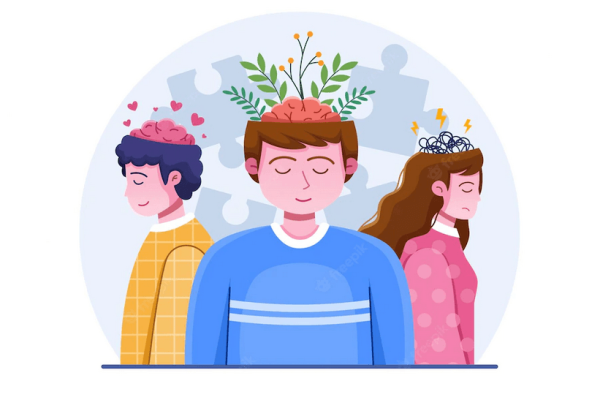A social justice perspective

Stigma and Mental Health – Introduction
Stigmas refer to a negative and unfair social attitude exhibited towards a person or a group of persons. Such attitude might be on account of his or their perceived deviation from the normal, or for any perceived defect of deficiency. Stigmas result in discrimination of persons or group of persons, and eventual social isolation, which might adversely impact the individuals concerned. Similarly, stigma around mental health problems also exist, albeit with stronger influence on the holders of stigma as well as the victims. Mental health problems and illnesses, as it is, attract widespread misunderstanding, misconceptions, prejudices, biases and superstitions. Mental health stigmas adds fuel to the fire in terms making life miserable for the victims of such stigmas.
Sources of Stigma
Some of the sources of mental health stigmas can be found in personal beliefs, social beliefs and family beliefs, as well as from the lack of awareness, education and out of plain fear about mental illnesses. Often, stigma may not be explicitly expressed, but merely articulated through gestures or general indifference to another. It might also be in the form of offensive or derogatory language. Irrespective of the form of expression of stigma, it could have very adverse impact on the victims of such behaviour. A few of the ill-effects of stigma and resultant offensive behaviour are, shame, low self-confidence, low self-esteem, internalizing negative thoughts and social avoidance.
Mental Health from a Social Justice Perspective
Interestingly, stigma around mental health topics has a strong connection to the social justice milieu. The marginalized and the disadvantaged sections of the society typically undergo treatment or behaviours arising out of stigmas. Social injustice is a form of violation of fundamental rights of the individual or group of persons. Such violations have the power to cause physical, emotional, and psychological damage to the disadvantaged sections, especially those suffering from mental health problems. A large section of our society still views mental health conditions such as schizophrenia, personality disorders, dissociative personality disorders, obsessive compulsive disorders, trauma-related disorders, suicidal tendencies etc., through prisms that are coloured by stigmas and misconceptions. These views lead to inappropriate interactions with such persons or group of persons.
Access and Availability

Discussions about ways to overcome stigmas around mental health always point to better education and awareness. We need to put significant level of efforts in the direction of creating public awareness of mental health conditions. Any person could be affected by mental health conditions at any point of time. Regardless of whether the person has faced such problems in the past. Furthermore, sufficient level of acknowledgement has to happen in this sphere. The kind of fast-paced life that we are living in, and the kind of cut-throat competition we see around us, make at least some of us vulnerable and susceptible to mental health conditions. This puts the onus on the rest of society to help such individuals, in seeking help when needed most.
Moreover, another important aspect of this to create enough support systems. Systems that make it easy, convenient and affordable for anyone in need to access and avail such support mechanisms. In terms of the reach and responsiveness to cater to the mental health needs of our society, we see that our country has a long way to go in terms of availability of physical and human resources.
Let’s take one metric to illustrate the point. Per capital psychiatrists working in mental health sector (2016-17 – WHO). For advanced economies like the US, Germany and France the figures (per 100,000 population) was 10.54, 13.2 and 20.9. For India, the same was 0.292! We can see similar contrast in other segments like nurses and social workers working in the mental health sector. Evidently, a lot need to improve to ensure that right support is available and accessible for people in need of mental health support. Especially for those in the marginalized sections of the society.
Mainstreaming

Building or creating the kind of infrastructure that caters to a large section of the society is contingent upon a host of factors. Factors such as the will of the administration, availability of public finances, administrative support for such decisions etc. Apart from such big steps, a few smaller steps can be initiated at a more regional or local level. One such step is to mainstream the persons undergoing mental health conditions. Undoubtedly, this should apply to persons of all age groups, health conditions and social strata that they belong to.
A good example is the promotion of Diversity and Inclusion in all spheres of life, especially in education and workplaces. Promoting inclusive education has proved to be a huge step for a large number of students. Students who were otherwise confined to special schools or to their homes. Of course, driving the philosophy of diversity and inclusion demands great conviction on the part of the leadership of the organization or institution. However, it can be a reward by itself, as it will help bring stigmatized persons to the mainstream.
Societal Integration
A vital aim of the social justice perspective of removing stigma around mental health conditions is not just about bringing the marginalized and disadvantaged sections of our society, especially impacted by mental health conditions, illnesses, or problems, but to ensure seamless social integration of such persons or group of persons, with respect and honour devoid of any type of discrimination. Our public and private enterprises, educational institutions and other organizations should proactively chalk out plans and strategies. First, to provide opportunities for education for such persons. Second, to provide employment opportunities to leading a peaceful and respectful life. And third, to provide a conducive environment where such persons can lead a meaningful life with harmonious interactions with his fellow beings.
To conclude, it may appear that such lofty ideals may be impractical and difficult to implement and achieve. However, when persons with more privilege and capacity than others dream about and take those firm steps, there will be positive changes to the lives of many. We should never underestimate the power of one such deed to bring a smile on another’s face. When enough individuals take such steps, we would’ve truly achieved a community-driven social justice action to help remove the stigma around mental health.
This is the 2nd of a two-part essay written as part of the World Mental Health Day, 2022.
Dinkar Krishnan

